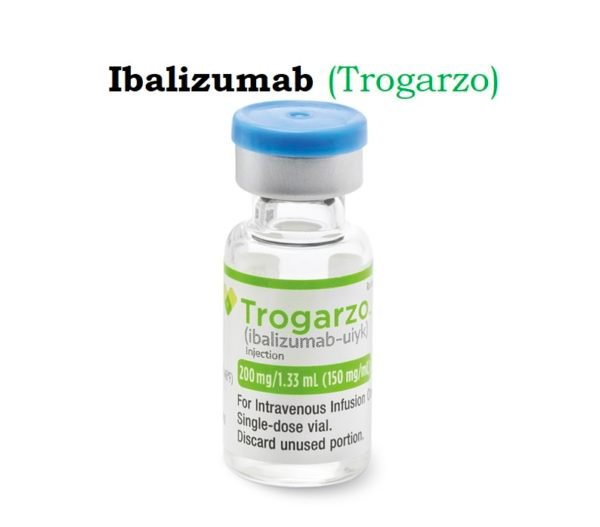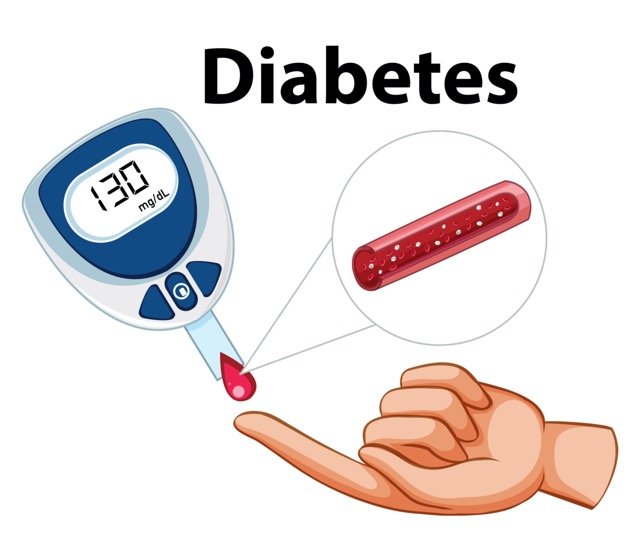Ibalizumab (brand name Trogarzo) is a medication used for the treatment of human immunodeficiency virus (HIV) infection. It is classified as a monoclonal antibody and functions as a post-attachment HIV-1 inhibitor. Ibalizumab is indicated for use in combination with other antiretroviral medications in adults with multidrug-resistant HIV-1 infection who have exhausted other treatment options.
Ibalizumab Uses:
- HIV-1 infection:
- It is indicated in combination with other antiretrovirals drugs for the treatment of HIV-1 infection in adult patients:
- who have a multidrug-resistant HIV-1 infection
- heavily treatment-experienced, and
- who have failed their current antiretroviral regimen
- It is indicated in combination with other antiretrovirals drugs for the treatment of HIV-1 infection in adult patients:
Ibalizumab (Trogarzo) Dose in Adults:
Ibalizumab (Trogarzo) Dose in the treatment of HIV-1 infection:
IV (Intravenous) Administration:
- Initial Dose: 2,000 mg (milligrams) as a single dose.
- Maintenance Dose: 800 mg every 14 days (every two weeks) thereafter.
Missed Dose:
- If a maintenance dose (800 mg) is missed and it has been three or more days beyond the originally scheduled dosing day, a loading dose (2,000 mg) should be administered as soon as possible.
- Following the loading dose, the regular maintenance dosing schedule of 800 mg every 14 days should be resumed.
Ibalizumab (Trogarzo) use in children:
The safety and efficacy of the drug in children have not been established.
Pregnancy Risk Category: Not assigned
- Monoclonal antibodies like ibalizumab can pass from a pregnant person to their fetus.
- However, there is not enough data available to recommend the use of ibalizumab in pregnant individuals with HIV who are starting antiretroviral therapy (ART) for the first time, restarting ART after previous use, needing a new ART regimen due to poor tolerance or response, trying to conceive, or who become pregnant while taking ibalizumab.
- The specific dosing recommendations for ibalizumab during pregnancy are also not well-established due to limited pharmacokinetic data.
- Generally, it is recommended for all pregnant individuals with HIV to receive ART to keep their viral load undetectable and reduce the risk of transmitting the virus to the baby.
- Close monitoring is necessary during pregnancy, and ART should be continued after giving birth, with possible adjustments to the medication regimen.
Ibalizumab use during breastfeeding:
- The presence of ibalizumab in breast milk is not known, but naturally occurring human immunoglobulins are present.
- It's important to note that even if a mother or infant is receiving antiretroviral therapy, there is still a risk of HIV transmission after birth.
- There have been cases where infants who were breastfed by mothers on therapy still acquired multiclass-resistant virus.
- Therefore, in the United States, where safe and affordable formula feeding is available and the risk of infant mortality due to infections is low, it is recommended that individuals with HIV completely avoid breastfeeding to minimize the potential transmission of HIV to the infant (as stated by the Health and Human Services Perinatal HIV Guidelines in 2018).
Dose in Kidney Disease:
The manufacturer has not provided any adjustement in the dose in patients with kidney disease (the drug has not been studied in patients with kidney disease).
Dose in Liver disease:
The manufacturer has not provided any adjustement in the dose in patients with liver disease (the drug has not been studied in patients with liver disease).
Less Common Side Effects of Ibalizumab (Trogarzo):
- Central Nervous System:
- Dizziness
- Dermatologic:
- Skin Rash
- Endocrine & Metabolic:
- Increased Serum Glucose
- Increased Uric Acid
- Gastrointestinal:
- Diarrhea
- Increased Serum Lipase
- Nausea
- Hematologic & Oncologic:
- Decreased Neutrophils
- Leukopenia
- Decreased Hemoglobin
- Decreased Platelet Count
- Hepatic:
- Increased Serum Bilirubin
- Increased Direct Serum Bilirubin
- Renal:
- Increased Serum Creatinine
Contraindications to Ibalizumab (Trogarzo):
- The manufacturer has not provided any indications that it is contraindicated to be used.
Warnings and precautions
Inflammatory syndrome of immune reconstitution
- During the initial treatment of HIV, some patients may experience a condition called immune reconstitution inflammatory syndrome (IRIS).
- This condition occurs when the immune system starts to recover and responds excessively to an existing opportunistic infection that was previously dormant or not causing noticeable symptoms.
- As a result, patients may develop an inflammatory response that requires further evaluation and treatment to manage the symptoms and complications associated with this immune response.
- It is important for healthcare providers to monitor patients closely during the early stages of HIV treatment to identify and manage IRIS if it occurs.
Infusion-associated reactions
- Infusion-associated reactions are possible when receiving ibalizumab infusions.
- It is recommended to closely monitor patients for one hour after the completion of the first infusion.
- This observation period allows healthcare providers to promptly address any potential reactions that may occur.
- If no infusion-associated reactions are observed during the first infusion, the post-infusion observation time can be reduced to 15 minutes for subsequent infusions.
- This helps ensure the safety and well-being of patients during the infusion process.
Use it in the right way:
- Ibalizumab is not recommended for use in patients who are starting antiretroviral therapy (ART) for the first time and have not previously received any antiretroviral medications.
- The medication is typically used in combination with other antiretroviral drugs in patients with multidrug-resistant HIV-1 infection who have already tried and exhausted other treatment options.
Monitoring parameters:
CD4 Count:
- Ibalizumab is not recommended for patients who are starting HIV treatment for the first time (antiretroviral therapy-naïve).
- It is typically used in patients with multidrug-resistant HIV-1 infection who have exhausted other treatment options.
HIV RNA Plasma Levels:
- Ibalizumab, when used in combination with other antiretroviral drugs, helps lower the HIV RNA levels in the blood (viral load).
- It is an important medication for managing HIV infection and reducing the amount of virus in the body.
Infusion-Related Reactions:
- Infusion-associated reactions may occur during the administration of ibalizumab.
- Patients are closely observed for at least one hour after the first infusion to monitor for any adverse reactions.
- If no infusion-associated reactions are observed, the post-infusion observation time can be reduced to 15 minutes for subsequent infusions.
How to administer Ibalizumab?
IV Administration Instructions:
- Ibalizumab is intended for intravenous (IV) administration only. It should not be given as an IV push or bolus.
- The medication is typically administered into the cephalic vein (a vein in the arm). If the cephalic vein is not accessible, an appropriate vein in another location may be used.
Loading Dose (Initial Infusion):
- The initial infusion, also known as the loading dose, should be given over a minimum of 30 minutes.
- After the completion of the loading dose, the patient should be observed for one hour to monitor for any adverse reactions associated with the infusion.
Maintenance Doses (Subsequent Infusions):
- If no infusion-related adverse reactions are observed during the initial infusion, subsequent infusions, known as maintenance doses, may be administered over a minimum of 15 minutes.
- The post-infusion observation time can be reduced to 15 minutes after the completion of the maintenance dose.
Flush:
- After each infusion, it is recommended to flush with 30 mL of normal saline (NS).
Mechanism of action of Ibalizumab (Trogarzo):
- Ibalizumab is a type of medication called a recombinant humanized monoclonal antibody.
- It works as a post-attachment inhibitor for HIV-1, the virus that causes HIV infection.
- This means it prevents the virus from infecting CD4 T cells in the body.
- It does so by binding to a specific part of CD4 cell receptors called domain 2.
- This binding causes a change in shape that blocks the interaction between the HIV envelope protein gp120 and the co-receptors on CD4 cells.
- Ibalizumab can effectively block the entry of HIV strains that use both CCR5 and CXCR4 co-receptors.
- Importantly, ibalizumab's selective binding to domain 2 of CD4 cells allows it to block HIV entry without suppressing the immune system or reducing CD4 cell counts, which are vital for immune function (Iacob, 2017).
Distribution:
- The volume of distribution (V) of ibalizumab is approximately 4.8 liters.
- This refers to the apparent space in the body where the medication is distributed.
Half-life Elimination:
- The half-life elimination of ibalizumab is reported to be around 3.1 to 3.3 days.
- The half-life represents the time it takes for half of the medication to be eliminated from the body.
International Brands of Ibalizumab:
- Trogarzo
Ibalizumab Brands Names in Pakistan:
No Brands Available in Pakistan.







